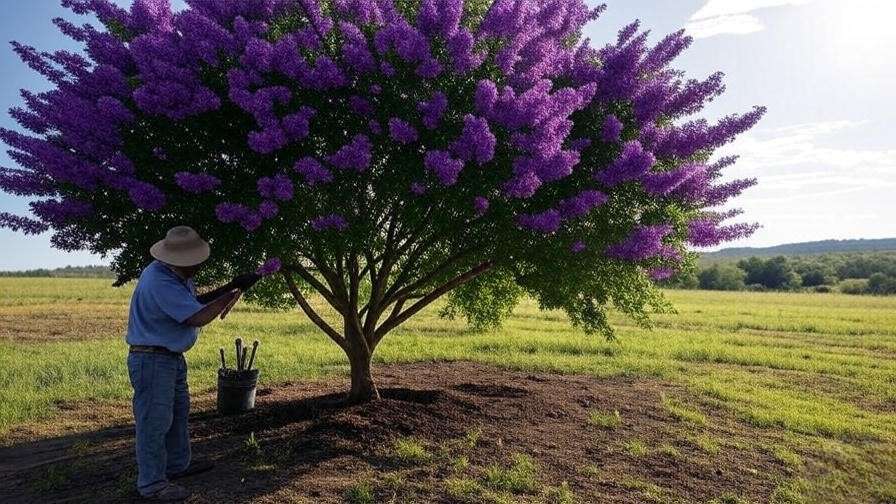Picture your Texas garden bursting with vibrant purple blooms, buzzing with pollinators, and thriving despite scorching summers. That’s the magic of Vitex trees in Texas! Known as the Chaste Tree, Vitex agnus-castus is a low-maintenance, drought-tolerant superstar that transforms landscapes across the Lone Star State. Whether you’re a novice gardener or a seasoned horticulturist, this guide delivers expert advice to help your Vitex flourish. With over a decade of experience in Texas tree care, I’ll share practical, proven tips to ensure your Vitex trees bloom spectacularly and stay healthy for years. Let’s dive in! 🌞
Vitex trees are beloved for their fragrant, lavender-like flower spikes and ability to thrive in Texas’ challenging climate. This comprehensive guide addresses the needs of gardeners seeking to plant, care for, and troubleshoot Vitex trees in Texas’ unique conditions. From soil prep to pest control, we’ve got you covered with actionable steps and expert insights to make your garden a showstopper. 🌺
H2: Understanding Vitex Trees in Texas 🌞
H3: What Makes Vitex Trees Unique? 🌿
Vitex agnus-castus, commonly called the Chaste Tree, is a deciduous shrub or small tree that grows 10-20 feet tall, with some varieties reaching 25 feet. Its aromatic, palmate leaves and long, vibrant flower spikes in shades of purple, blue, or white make it a standout in any landscape. In Texas, Vitex thrives due to its adaptability to heat, drought, and poor soils, making it a favorite for gardeners from Dallas to San Antonio.
Popular varieties in Texas include ‘Montrose Purple’ (deep violet blooms), ‘Shoal Creek’ (large, lavender flowers), and ‘Texas Lilac’ (compact growth). These cultivars are bred for resilience and extended bloom periods, typically from late spring to early fall. Their ability to handle Texas’ alkaline soils and intense sun sets them apart from fussier ornamentals. 🌻
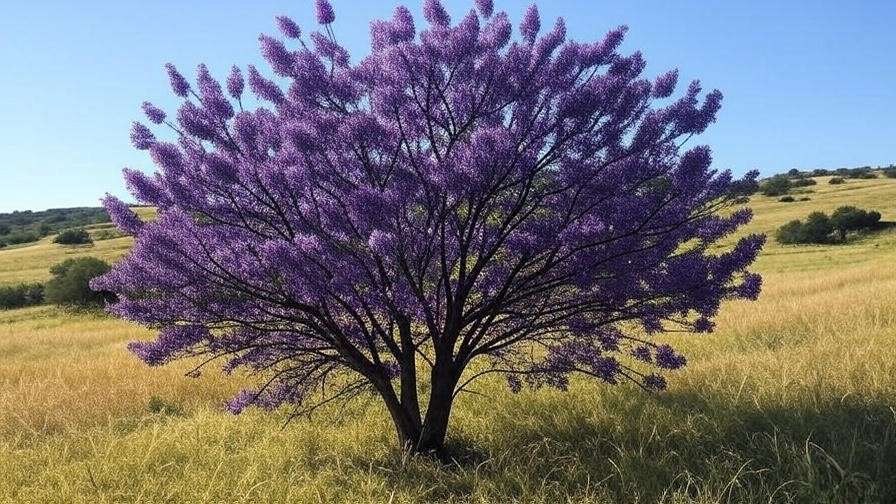
H3: Benefits of Growing Vitex in Texas Gardens 🌼
Vitex trees are a triple threat: beautiful, low-maintenance, and eco-friendly. Their vibrant blooms attract bees, butterflies, and hummingbirds, boosting local pollinator populations. 🐝 This makes them ideal for wildlife gardens or sustainable landscapes. Their drought tolerance aligns perfectly with Texas’ water-conscious gardening trends, especially in xeriscaping projects.
Beyond aesthetics, Vitex requires minimal upkeep, saving time for busy homeowners. Historically, its berries were used as a medicinal herb for hormonal balance, earning the name “Chaste Tree.” While not a primary reason to grow it, this adds an intriguing layer to its appeal. Whether you’re enhancing curb appeal or creating a pollinator haven, Vitex delivers. 🌸
H2: Climate and Soil Considerations for Vitex in Texas 🌎
H3: Texas Climate Zones and Vitex Compatibility ☀️
Texas spans USDA Hardiness Zones 6-9, from the chilly Panhandle to the subtropical Rio Grande Valley. Vitex thrives in most of these zones, particularly Zones 7-9, which cover Central, South, and East Texas. Its heat tolerance makes it a natural fit for Austin, Houston, and San Antonio, where summer temperatures often exceed 90°F. In North Texas (Zone 6), Vitex may need winter protection during rare freezes, such as mulching around the base.
To ensure success, check your local zone using the USDA Plant Hardiness Zone Map. In hotter regions, Vitex benefits from afternoon shade, while cooler areas require full sun for optimal blooming. Understanding your microclimate is key to long-term success. ❄️
H3: Ideal Soil Conditions for Vitex 🌱
Vitex is remarkably adaptable to Texas’ diverse soils, including clay, sandy, and loamy types. However, it prefers well-draining soil with a pH of 6.0-7.5, common in Texas’ alkaline landscapes. Before planting, test your soil using a home kit or contact your local Texas A&M AgriLife Extension office for a professional analysis.
If your soil is heavy clay, amend it with compost or sand to improve drainage. For sandy soils, add organic matter like aged manure to boost water retention. Good drainage is critical, as Vitex is susceptible to root rot in waterlogged conditions, especially during Texas’ heavy spring rains. Mulching with wood chips or pine bark helps maintain soil moisture and temperature. 🌿
H2: Planting Vitex Trees in Texas: Step-by-Step Guide 🌳
H3: When and Where to Plant Vitex 🕒
The best time to plant Vitex in Texas is early spring (March-April) or fall (September-October), when temperatures are mild, and roots can establish before extreme weather. Spring planting is ideal in North Texas to avoid winter stress, while fall works well in South Texas for faster growth.
Choose a location with full sun (6+ hours daily) and ample space, as Vitex can spread 10-15 feet wide. Avoid planting near foundations or pipes, as its roots can be invasive. A sunny, open spot in your yard or garden bed ensures maximum blooms and healthy growth. Expert Tip: Mark your planting site to ensure proper spacing from other plants or structures. 🌞
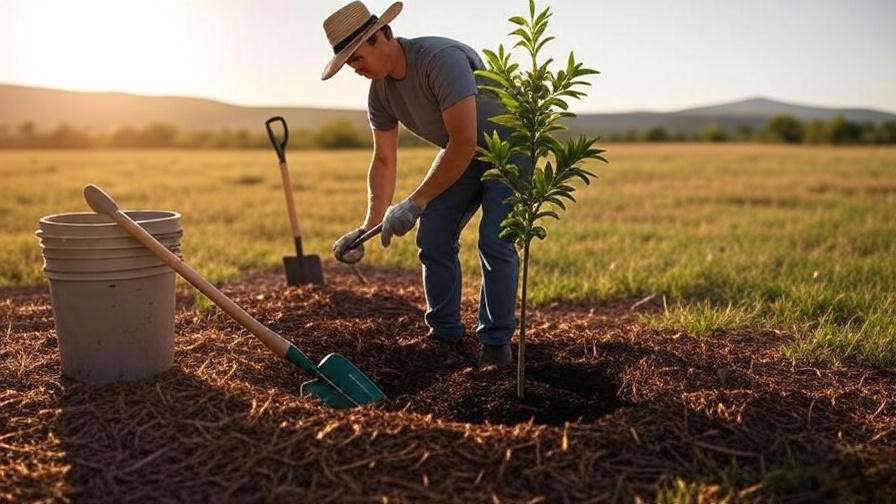
H3: How to Plant Vitex Trees for Success 🌼
Follow these steps for successful planting:
- Dig the Hole: Make it twice as wide and as deep as the root ball.
- Amend Soil: Mix native soil with 20-30% compost for nutrient-rich planting.
- Position the Tree: Place the root ball level with the ground surface.
- Backfill and Water: Fill the hole, tamp down soil, and water deeply.
- Mulch: Apply a 2-3 inch layer of organic mulch, keeping it 2 inches from the trunk.
Water thoroughly after planting, providing 1-2 gallons daily for the first two weeks. Gradually reduce to weekly deep watering as the tree establishes. Mulch helps retain moisture and deter weeds, critical in Texas’ dry climate. 🌱
H2: Caring for Vitex Trees: Essential Maintenance Tips 🛠️
H3: Watering Vitex Trees in Texas’ Heat 💧
During the establishment phase (first 1-2 years), water Vitex weekly, providing 1-2 inches of water, especially during summer. Mature Vitex trees are drought-tolerant and need watering only during prolonged dry spells (2+ weeks without rain). Use a soaker hose or drip irrigation for efficient delivery to the root zone.
Signs of overwatering include yellowing leaves or soggy soil, while underwatering causes wilting or leaf drop. Adjust based on rainfall and soil type—clay soils retain water longer than sandy ones. Expert Tip: Water early in the morning to minimize evaporation in Texas’ heat. ☀️
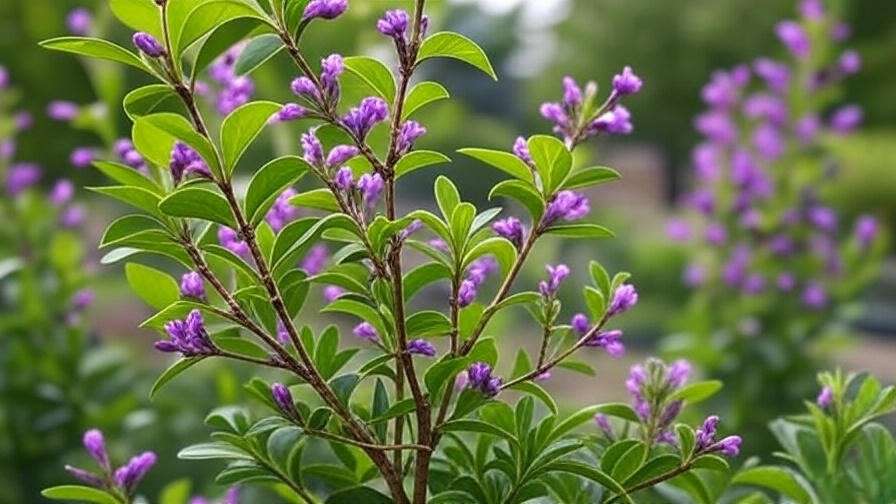
H3: Pruning for Health and Beauty ✂️
Prune Vitex in late winter or early spring (February-March) before new growth begins. This encourages vibrant blooms and maintains shape. Remove dead or crossing branches, and cut back up to one-third of the canopy to promote airflow and flower production. For a tree-like form, trim lower branches; for a shrub, keep it bushy.
Use clean, sharp pruners to avoid disease spread. Expert Insight: Pruning too late in the season can reduce blooms, as Vitex flowers on new wood. Regular pruning extends the tree’s lifespan and enhances its beauty. 🌸
H3: Fertilizing Vitex Trees for Vibrant Growth 🌿
Vitex trees in Texas benefit from light fertilization to boost blooms and growth. Use a balanced, slow-release fertilizer (e.g., 10-10-10 or 12-4-8) in early spring as new growth appears. Apply 1-2 pounds per 100 square feet around the drip line, avoiding direct contact with the trunk. Organic options like compost or fish emulsion work well for eco-conscious gardeners.
Fertilize once annually for established trees, as over-fertilizing can lead to excessive foliage at the expense of blooms. Test soil every 2-3 years to monitor nutrient levels, especially in nutrient-poor Texas soils. Expert Tip: Avoid high-nitrogen fertilizers, which can reduce flowering. 🌼
H2: Pest and Disease Management for Vitex Trees 🐛
H3: Common Pests Affecting Vitex in Texas 🕷️
Vitex trees are relatively pest-resistant, but certain insects can pose challenges in Texas. Common culprits include:
- Aphids: Small, sap-sucking insects causing curled leaves. Control with insecticidal soap or neem oil.
- Spider Mites: Tiny pests causing stippled leaves, prevalent in hot, dry conditions. Increase humidity or use miticides for severe infestations.
- Whiteflies: White, winged insects under leaves. Use yellow sticky traps or introduce natural predators like ladybugs.
Regularly inspect your Vitex for early signs of pests, especially during summer. Companion planting with marigolds or garlic can deter pests naturally. Expert Tip: Hose down foliage weekly to dislodge pests and keep leaves clean. 🐝
H3: Diseases to Watch For 🦠
Vitex is generally disease-resistant, but Texas’ humid spells can trigger issues like:
- Root Rot: Caused by overwatering or poor drainage. Ensure proper soil drainage and avoid waterlogging.
- Powdery Mildew: White, powdery coating on leaves in humid conditions. Improve air circulation through pruning and apply fungicides if needed.
Early detection is key. Remove affected plant parts and dispose of them properly to prevent spread. Expert Insight: Space Vitex trees 8-10 feet apart to enhance airflow and reduce fungal risks, especially in humid areas like East Texas. 🌱
H2: Landscaping with Vitex Trees: Design Ideas 💡
H3: Incorporating Vitex into Texas Landscapes 🌸
Vitex trees are versatile additions to Texas gardens, serving as focal points, hedges, or border plants. Their vibrant blooms pair beautifully with drought-tolerant companions like salvia, lantana, or Texas sage, creating colorful, low-maintenance landscapes. Use Vitex as a standalone specimen in small yards or as a flowering hedge along property lines for privacy.
For pollinator-friendly gardens, combine Vitex with native plants like coneflower or black-eyed Susan to attract bees and butterflies. In xeriscaping designs, pair it with succulents or ornamental grasses for a water-wise aesthetic. Design Inspiration: Create a butterfly garden with Vitex as the centerpiece, surrounded by milkweed and pentas. 🦋
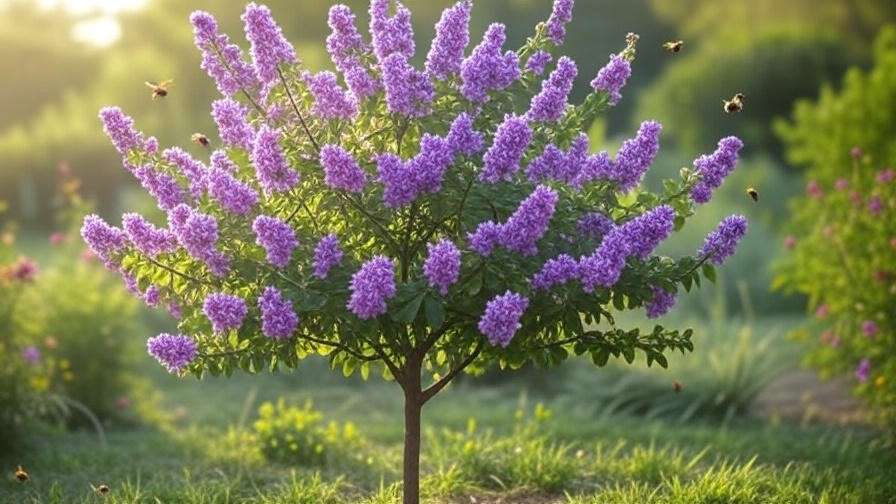
H3: Seasonal Care for Year-Round Beauty 📅
- Spring: Prepare for blooms by fertilizing lightly and pruning for shape. Check for pest activity as temperatures rise.
- Summer: Monitor watering needs during heatwaves. Deadhead spent blooms to encourage reblooming in some varieties.
- Fall/Winter: Mulch around the base in North Texas to protect roots from occasional freezes. Reduce watering as growth slows.
Seasonal care ensures your Vitex remains a year-round asset, even in Texas’ unpredictable weather. 🌞❄️
H2: Troubleshooting Common Vitex Tree Problems ⚠️
H3: Why Isn’t My Vitex Blooming? 🌺
Few things are more frustrating than a Vitex that won’t bloom. Common causes include:
- Insufficient Sunlight: Vitex needs 6+ hours of direct sun. Relocate or trim nearby shade sources.
- Improper Pruning: Cutting too late in the season removes new wood where flowers form. Prune in late winter.
- Nutrient Imbalance: Excess nitrogen or phosphorus deficiency can reduce blooms. Use a balanced fertilizer and test soil.
Case Study: A San Antonio gardener noticed sparse blooms on her ‘Shoal Creek’ Vitex. After moving it to a sunnier spot and adjusting pruning to February, she reported a 50% increase in flowers the next season. Solutions like these can transform your Vitex’s performance. 🌸
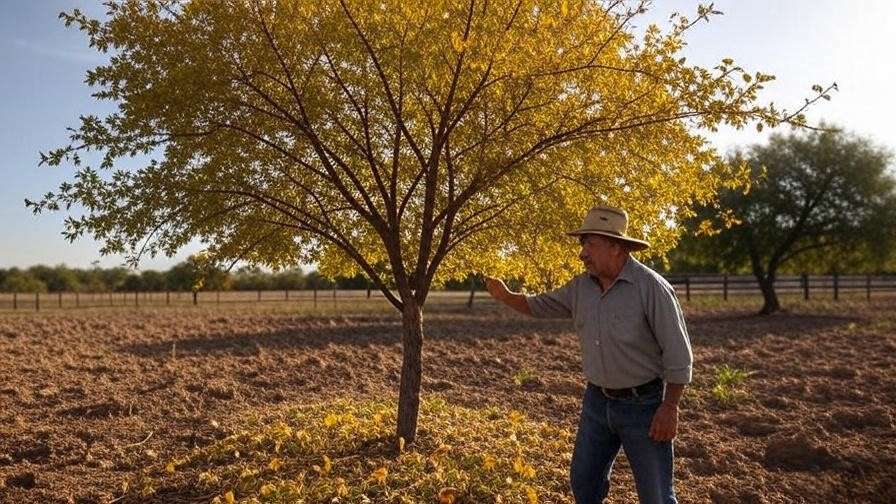
H3: Dealing with Yellowing Leaves or Stunted Growth 😟
Yellowing leaves or stunted growth often signal underlying issues:
- Nutrient Deficiencies: Iron or nitrogen shortages are common in Texas’ alkaline soils. Apply chelated iron or a balanced fertilizer.
- Pests or Diseases: Check for aphids, spider mites, or root rot. Treat promptly with organic or chemical controls.
- Watering Issues: Over- or underwatering can stress Vitex. Adjust based on soil type and rainfall.
If problems persist, consult a local arborist or your Texas A&M AgriLife Extension office. Expert Tip: Keep a garden journal to track symptoms and treatments for faster diagnosis. 📝
H2: FAQs About Growing Vitex Trees in Texas ❓
- How fast do Vitex trees grow in Texas? 🚀 Vitex grows moderately fast, adding 1-2 feet per year under ideal conditions. Growth slows in poor soils or drought.
- Are Vitex trees invasive in Texas? 🚫 Vitex is not considered invasive in Texas, though it can self-seed. Remove seedlings to prevent unwanted spread.
- Can Vitex trees survive Texas winters? ❄️ Yes, Vitex is hardy in Zones 6-9. In North Texas, mulch roots to protect against rare freezes.
- How do I propagate Vitex trees? 🌱 Propagate via softwood cuttings in summer or seeds in fall, though cuttings are more reliable for true-to-type plants.
These answers are tailored to Texas gardeners’ common concerns, ensuring practical solutions. 🌳
H2: Conclusion: Transform Your Texas Garden with Vitex 🌟
Vitex trees in Texas offer unmatched beauty, low maintenance, and pollinator-friendly benefits, making them a top choice for gardeners across the state. With proper planting, care, and troubleshooting, your Vitex can thrive in Texas’ challenging climate, delivering vibrant blooms and lush foliage year after year. Whether you’re enhancing a suburban yard or designing a sustainable landscape, Vitex is your ticket to a stunning, hassle-free garden.
Ready to grow your own Vitex? Start today with the tips in this guide, and share your success stories or questions in the comments below! For local support, connect with your Texas A&M AgriLife Extension office. 🌸

